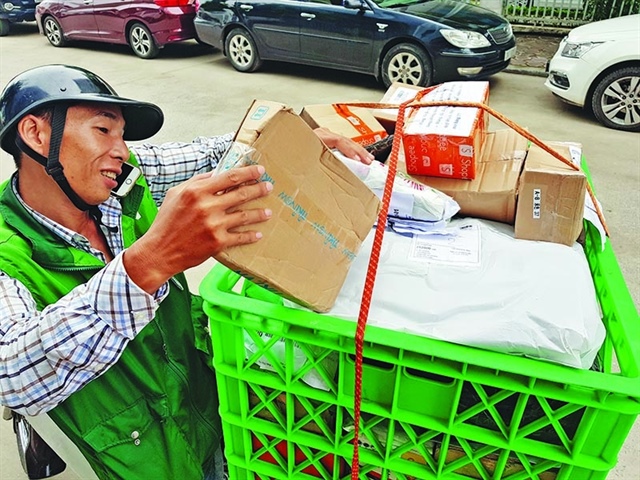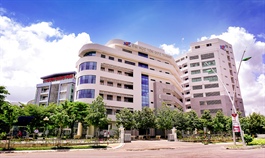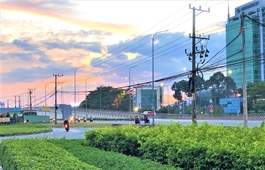IPs with seaports will have the advantage in attracting new-generation FDI flows
IPs with seaports will have the advantage in attracting new-generation FDI flows
The COVID-19 pandemic affected global supply chains and the transport industry, especially aviation, was disrupted, thus shipping took the throne. Meanwhile, new developments from free trade agreements are creating new opportunities for Vietnam's industrial real estate market.
Recently, China officially applied to join the Comprehensive and Progressive Agreement for Trans-Pacific Partnership (CPTPP). If China joins, the CPTPP will surpass the Regional Comprehensive Economic Partnership (RCEP) as the trade agreement possessing the world's largest value with the combined GDP of economies accounting for 30 per cent of global GDP compared to the current figure of about 13 per cent.
Previously, in November 2020, China also joined the RCEP including 10 ASEAN member countries and four countries with which ASEAN signed a free trade agreement (FTA), namely Australia, Japan, South Korea, and New Zealand.
The CPTPP currently includes 11 members, ranking third in size among FTAs in the world, after RCEP, which is worth $26 trillion and the US-Mexico-Canada FTA (USMCA) which is worth $21 trillion.
The admission of new members will become a controversial topic among member countries as it will shift the balance of trade, economy, and politics in the region.
Putting aside political and economic goals, these moves are increasingly reinforcing the trend of capital flows in the direction of "China + 1".
Before that, since the US-China trade war broke out in 2018, the US and some developed western countries have moved part of their supply chains out of China. This is to avoid putting all of their eggs in the same basket, minimising political and commercial risks.
Accordingly, companies maintain production activities in China while expanding to another country. At this time, ASEAN is particularly appealing because it is close to the Chinese market.
Advantages of seaports
With the above developments, it is understandable why the ASEAN region has received large foreign direct investment (FDI) inflows in recent years, including Vietnam. Vietnam shares a land and sea border with China, with an international seaport system, developed industrial park (IP) infrastructure, and stable policies. It is also a member of the CPTPP and RCEP. Therefore, Vietnam is rated as one of the most attractive destinations in ASEAN.
Whether China is agreed to join the CPTPP or the US returns to the CPTPP, ASEAN will continue to be the focus of FDI flows. Vietnam is making good use of this opportunity to welcome new, high-quality, and environmentally friendly FDI flows.
Especially in the context of the pandemic, aviation and road transport face many difficulties, and sea transport is emerging as the optimal transportation channel. Countries in ASEAN that have seaports will have more advantages in attracting investment, and one of two seaports of class 1A (international gateway port) is located in Haiphong city.
This partly explains the growth of FDI inflows to Vietnam, particularly to Haiphong, in the first nine months of 2021, despite the impact of the fourth outbreak.
Nam Dinh Vu IP of Sao Do Group owns this great advantage. Nguyen Thanh Phuong, general director of the group said: "Since the beginning of 2021, the IP has been continuously attracting new projects, and the group must also accelerate the leveling of our vacant land fund to meet the demand of investors."
With the advantage of having a seaport located in the area, the Seaport and Logistics subzone with a scale of nearly 200 hectares is one of the most potential convergence areas of the IP, with a scale of seven container terminals and a total investment of VND6 trillion ($260.87 million). Currently, the entire technical infrastructure of the first phase of Nam Dinh Vu port has been completed, with two berths already in operation with a capacity of about 800,000 to 1 million TEUs per year. The next two berths of the second phase are already underway and are expected to be launched in mid-2022.
In addition, the group has also invested in a bonded warehouse with a scale of 13ha and is currently putting it into operation quite effectively, gradually contributing to the improvement of facilities and services for this area. In the coming time, Sao Do Group will invest in building a liquid cargo wharf, providing petroleum, gas and natural gas services to industrial customers.
Besides developing the advantage of a seaport in the IP, the group also uses VR technology to assist foreign investors in visiting Nam Dinh Vu IP from afar, and promote investment in infrastructure to create sufficient land bank for large corporations and expand ready-built factories.
All these factors will help Nam Dinh Vu IP increase services and business efficiency for investors.
























